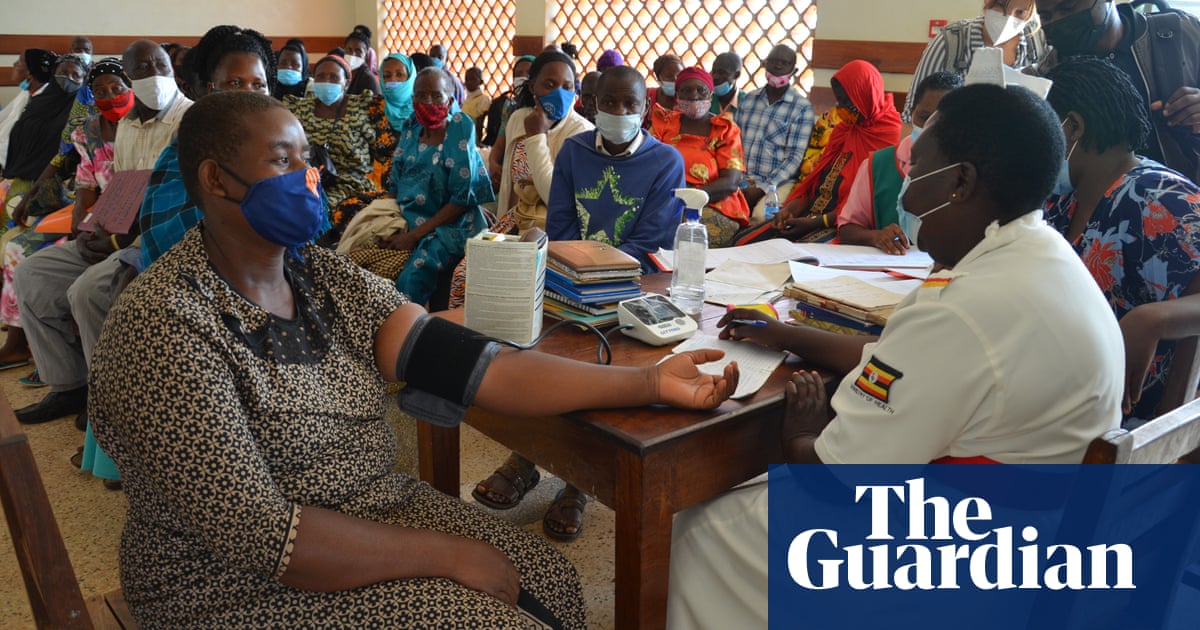
In one of the most under-resourced places in Uganda, where there is just one doctor for every 25,000 people, success does not go unnoticed.
Most Ugandan government health facilities focus on infectious diseases, but in Nakaseke district, about 65km from the capital Kampala, three clinics treat people with non-communicable diseases (NCDs) such as diabetes, kidney disease and chronic lung conditions.
As in other low- and middle-income countries, the burden of illnesses in Uganda is transitioning from tropical and infectious diseases to these common NCDs, which kill 41 million people every year worldwide, roughly 71% of annual global deaths.
Uganda “has been overwhelmed by the growing burden of NCDs across all socioeconomic strata”, according to a 2021 assessment.
But the clinics, run by the Balamu project, have proven so successful that the Ugandan government has now committed to replicating them nationally.
The weekly clinic at Nakaseke general hospital has seven nurses and a doctor, who works across the three clinics. When it opens every Friday, staff see about 100 to 200 patients, in a region more than 60% of people live on less than £10 a month.
“In Uganda, about 80% of the health worker force lives in big towns, which constitute about 20% of the population,” says Dr Robert Kalyesubula, founder of the African Community Centre for Social Sustainability (Access Uganda), the organisation behind Balamu. “This creates a great imbalance in the number of health workers available to provide services to the majority of Ugandans.” Kalyesubula says NCDs are “often left untreated in Uganda”.
Born in Nakaseke, Kalyesubula was seven when war broke out in the 1980s and, after becoming separated from his parents as they fled the fighting, grew up in an orphanage. His father was killed, and he didn’t see his mother again for nearly nine years. But Kalyesubula made it to medical school, then to the Yale School of Medicine in the US, before returning to Nakaseke and establishing Access.
Balamu (“being healthy” in the Luganda language), is community-based, educating nurses, pioneering electronic medical records and providing public education booklets. Following World Health Organization (WHO) guidelines, it integrates care under one roof.
A key achievement has been training health workers to screen patients, make referrals and follow up on medication. They have screened 16,000 people so far.
“The major challenge to NCDs in Uganda is that most of the care, even in government hospitals, is met by patients using out-of-pocket payments,” Kalyesubula says.
“Many hospitals lack equipment and medicines to fight NCDs. This compares poorly with communicable diseases like HIV/Aids, tuberculosis and malaria, which have received a tremendous amount of funding for the last 30 years.
“In fact, as a nephrologist, when I tell my patients that they have chronic kidney disease and may need hemodialysis, they tell me they wish they had HIV instead, because those people receive free medical care.”
NCDs are projected to become the leading cause of death across Africa by 2030. In eastern Uganda, that milestone has already been reached.
Hypertension is a particular issue, with the prevalence estimated to be between 26% and 31%, with only 7% aware of their condition, according to surveys.
Immaculate Nakabiri, 73, has been attending Balamu’s Semuto clinic since her dizziness and joint pains were diagnosed as high blood pressure. “I’m the head of the family,” she says. “The disease doesn’t allow me to work to support my family, which has created a big gap to meet my family needs. We no longer had enough to eat at home because I cannot dig in the garden.”
She now takes medication but says most people over 50 in her community have undiagnosed illnesses that badly affect their lives.
Dr Richard Munana rotates his time between the three Balamu clinics. He says the biggest challenge is out-of-stock medicines: “By government policy, more attention is paid to communicable diseases than NCDs. This means that the majority of our patients go without the required medication.”












